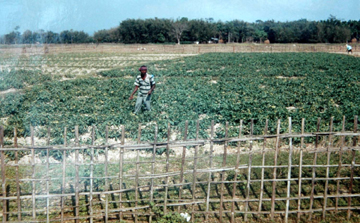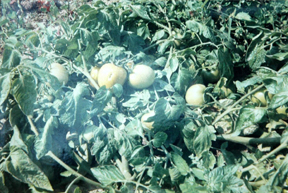Quite often, the state of Asom garners media headlines for insurgency related issues. Surely, the northeastern state of India is home to many armed outfits including the United Liberation Front of Asom, fighting New Delhi for various demands from self-rule to sovereignty. But these gun-totting youth are not the only people in Asom. The oil and tea rich state has also given birth to many enterprising men and women, who are making valiant endeavors to earn dignified livelihoods. The poor workforce in rural Asom have started taking advantage of the few available Central Government schemes. Slowly but steadily, some have marked their points in the profession and have set example for hundreds of others.

Meet the members of Aditya SHG (Self Help Group), who have set a vibrant example of how a small band of men and women can change their lives and also those of others by simply organizing themselves and investing in their farms. Formed in July 2002, the SHG is based in Golaghat (Gomariguri Development Block) in eastern (Upper) Asom. Asom is known for repeated and devastating floods thanks to the untamed Brahmaputra River. Like other states in the region, Asom too does not boast of a strong industrial base, except for a few oil companies, which are located in the eastern part of the Brahmaputra valley. Therefore, farming is the mainstay of the people.
The Gomariguri area is rural. Most inhabitants are small-scale farmers. The primary crop is rice, mostly cultivated once in a year. The region does not have any advanced health care or higher education facilities. Avenues for economic advancement simply do not exist. The average annual income of the villagers is very low and they survive hand to mouth. Merapani, the Asom-Nagaland border town is the nearest urban area. The district headquarters are located in Golaghat and it takes around three hours by bus. The state capital, Guwahati is an overnight bus journey away (over 300 km). Beyond Golaghat, next important town for the region is Jorhat.
The Aditya SHG emerged when 13 young men and women of the area decided to sell their agricultural products together. This decision not only helped them immediately and significantly cut transportation costs, but a larger product base also gave them better leverage in the market. The joint venture, though unplanned, started showing results soon. Earlier each of the individual farmers produced significant amounts of crop, but most of what each produced was sold at low price in the local market. The demand of the local market was (still is) low. Moreover, some businessmen took advantage of the situation (abundant production but low demand) and bought crop cheaply and benefited by selling in bigger markets like Jorhat, Dibrugarh, Tinsukia and Guwahati.
The Aditya group decided to transport its crop to bigger markets with high demand. Initially they transported the crop to nearby towns and sold to wholesalers. It turned beneficial for the members of the group. Soon they started networking with businessmen based in Jorhat, Dibrugarh and Tinsukia for selling their crop on a regular basis. Today, the group employs its own people in these towns to sell and to take orders from the big buyers. It helps the group two ways. First, it can supply according to the demands in the bigger markets and secondly it can gain bigger returns.
As the informal group made advances on its own, an official from the District Rural Development Agency, Golaghat, told the members about the benefits of forming a formal self-help group, as defined by the Swarnjayanti Gram Swarozgar Yojna (SGSY). The idea looked interesting to the group and it kicked off the formation of an SHG by opening a savings account at the Asom Grameen Vikash Bank.
The group’s first capital investment was in a tractor. It proved to be a good decision because it served dual purpose. First, the tractor helped till the land better and the group started growing Sali, a type of rice cultivated in summer season. The harvested quantity was also high because this particular area is not flood-prone, unlike other parts of Upper Assam.
 Secondly, the SHG started renting out the tractor to other farmers of the area at a nominal charge. With the extra income and another bank loan, they soon bought another tractor. Around the same time, the group also started diversifying into new products, with high demand in the area, such as tomato, capsicum, cabbage, and ginger.
Secondly, the SHG started renting out the tractor to other farmers of the area at a nominal charge. With the extra income and another bank loan, they soon bought another tractor. Around the same time, the group also started diversifying into new products, with high demand in the area, such as tomato, capsicum, cabbage, and ginger.
In fact, Aditya SHG is one of the hundreds of thousands successful SHGs formed all over India under the auspices of the SGSY. The Government of India launched the scheme in April 1999 with an aim to bringing about a paradigm shift in development strategy and for creating employment opportunities for the rural poor. The members of the SHGs are encouraged to undergo appropriate professional training and participate in economic activities with bank credit. The groups are advised to conduct regular meetings. They are encouraged to save regularly and also undertake internal lending activities.
According to Ministry of Rural Development (Government of India) sources, nearly 2.5 million SHGs have been formed in India, out of which nearly 500,000 SHGs are credit-linked with banks. Over 7.5 million rural poor families all over India (till January, 2007) have undertaken economic activities such handicraft, mushroom, piggery, dairy farming, mechanized agriculture and various robi crops. Over Rs. 10 billion have been provided as bank loan to the SHGs against which National Bank for Agricultural and Rural Development (NABARD) provided refinance assistance of around 8 billion rupees to the banks. The goal of NABARD is to credit-link around 10,00,000 SHGs by 31 March 2008.
According to Asom government sources, around 150,000 SHGs have been formed in Asom till December 2006. The program involves over a million Below Poverty Level families that encompasses around 16% of the total population (26 million) of Asom. The State Institute of Rural Development statistics disclose that more than 2000 SHGs have obtained loans from different banks in the last three financial years for a total amount of Rs 250 million.
Till recently, the land owned by members of the Aditya SHG used to remain fallow in the winter because they did not have enough capital to invest in any new crop. As the group started profiting, it decided to roll a part of its profit to grow robi (cultivated in winter season) crops.
Four years after it started, products of the SHG are today sold in various parts of the region. In fact, their products have carved a niche in the region and are sold under a brand name - Aditya Vegetable Products. “Now we are well recognized in the markets. We try to maintain the quality of the products,” said Durgeswar Saikia, a member of the group.
In addition to enjoying the financial benefits of success, the group also helps other farmers of the region. They buy products from other farmers and sell them under the AVP brand. For local farmers this has proved to be a boon because now they don’t need to sell their produce individually and are also assured of a minimum price for their products sitting at home. This system has worked out so well that over 500 families of the region now depend on the SHG.
As a part of community service, the SHG often tills land of poor farmers and widows without charge. “Our tractors are hired by other farmers. Sometimes, we prepare the land of poor people and widows with the tractor. We only charge for fuel but often we do it absolutely free,” said Biren Saikia, advisor to group.
Despite its success, the group is facing problems that are inhibiting its growth. Irrigation facilities are almost non-existent in the region. “We have to depend only on rainfall. For small irrigation projects, we use our ponds,” Mr. Saikia said. He strongly argues for a larger-scale groundwater irrigation project to be undertaken by the state government and if that is not possible given the topography of the area, then he recommends that surface water be transported from the hill springs.
For expanding its business, the group has received Rs 10,000 as a “Revolving Fund” from the District Rural Development Agency, Golaghat. It also took out a loan of Rs 25,000 from a bank. With that and a subsidy of nearly Rs 100,000, it purchased the second tractor. Now the group is planning to buy a truck so that they can transport a larger quantity of what they produce to the market in one trip especially during the peak season. This will be an important move to strengthen its supply-chain management. “Since we have no facility for cold storages here, it is essential to send the products to the market as soon as possible. Otherwise, they can rot,” asserted Nandeswar Saikia, another member of the SHG. The young entrepreneur also added that to overcome this problem, the group is planning to start a cold storage facility for the benefit of the farmers in the locality.
Though promoted and funded by New Delhi, the self-help group activities have never faced any problems from the secessionist leaders in the state. The SHG movement involves hundred of thousands youths and women, who otherwise remained sympathizers to the cadres of the outfits. But in the recent past, the armed outfits have lost mass support because of their many anti-people activities. Now the outfits do not possess the moral courage to put ban on such activities. More precisely, the separatist groups like the ULFA used to argue that their mission would bring economic upliftment to the common people in the long run. However, these enterprising villagers have already reaped economic benefits from government-endorsed schemes.
By Nava Thakuri. Thakuria is a Guwahati based freelance journalist and may be contacted
at navathakuria AT gmail.com.
- Log in to post comments
Comments
Dear Mr. Nava thank you for
Dear Mr. Nava
thank you for writing a magnificent piece about aditya SHG. Really Assam is moving ahead with the vision of such entrepreneurs.this what i would like to call "RESURGENT ASSAM".I live in a tea garden-majagram tea estate- in the cachar district.there also the poor people have formed SHGs and are becoming financially stronger.people ,who never knew what bank was,are taking loan from the bank and improving their quality of life . it is very successful in the tea garden.THANK YOU AGAIN for bringing a deserving group to light
Thanks a lot Nava Da, It
Thanks a lot Nava Da,
It was really a nice reading for me. In fact, after getting habituated to hear only depressing news items of Assam and Assamese; this kind of news is making me thrilled and so happy. Entrepreneurship has been regarded as an rare exception for Assamese; hope time is near to disprove it.
After all, we have now to make up for decades of non-development; which demands many more 'Aditya's.